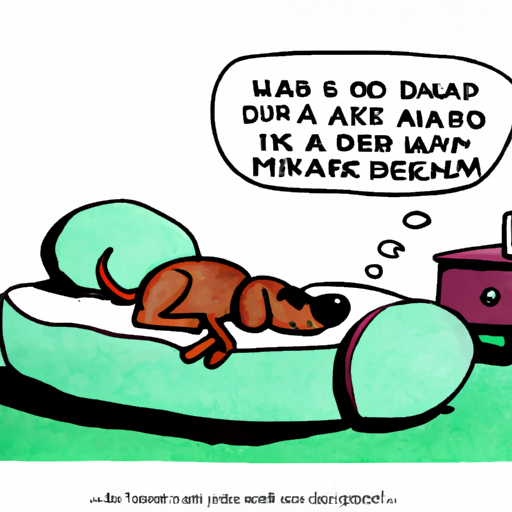1. Introduction
You see your furry friend peacefully sleeping, and suddenly, they start twitching. It might be amusing or even alarming to watch, but rest assured, it’s a normal part of a dog’s sleep cycle.
2. Understanding the Dog’s Sleep Cycle
Just like in humans, dogs have different stages of sleep, including rapid eye movement (REM) sleep. The REM stage is when most dreams occur, both in humans and dogs.
| Sleep Stages | Description |
|---|---|
| Light Sleep | The dog is easily awakened, but the body starts to relax |
| Deep Sleep | The dog is less responsive to outside stimuli. Healing and growth occur |
| REM sleep | The dog dreams and may twitch, move legs, or even bark |
During REM sleep, your pup might twitch or move because they are in the midst of a dream. So, if your dog is twitching, they’re probably chasing rabbits in their dreams.
3. When Twitching is Normal
Sometimes, you might notice your dog twitching more than usual. Don’t worry, it’s probably because:
- They’re in a deep sleep
- They’re having an exciting dream
However, remember that not all twitching is related to dreams. Sometimes, dogs twitch because they’re simply settling into a more comfortable position or reacting to an itch.
4. When to Be Concerned
While twitching is usually harmless, there are instances when it can be a sign of a more serious issue. If you notice any of the following signs, it would be best to consult your vet:
- Your dog’s twitching is persistent and continues even when they are awake
- Your dog seems to have difficulty waking up from sleep
- There are other symptoms like loss of appetite, behavioral changes, or unsteady gait
5. Ensuring Your Dog’s Comfort
You can improve your dog’s sleep quality and reduce twitching by:
- Providing a comfortable and warm bed
- Keeping their sleep area quiet and dimly lit
- Maintaining a consistent sleep schedule
- Engaging them in physical activity during the day
Remember, a well-rested dog is a happy and healthy dog!
FAQ
Q: How much do dogs sleep?
A: On average, dogs sleep for 12-14 hours a day.
Q: Is it okay to wake up a twitching dog?
A: Unless the twitching seems severe or your dog appears distressed, it’s best to let them sleep.
Q: Can I stop my dog from twitching?
A: Generally, twitching is a normal part of sleep and shouldn’t be stopped. If it seems excessive, consult your vet.
Q: Is twitching a sign of pain in dogs?
A: While it could be, twitching is usually normal. If your dog shows other signs of distress or discomfort, consult your vet.
Remember, your loving care is the best thing for your furry friend’s health and well-being. Stay informed, stay vigilant, and your dog will thank you with endless tail wags and cuddles.



